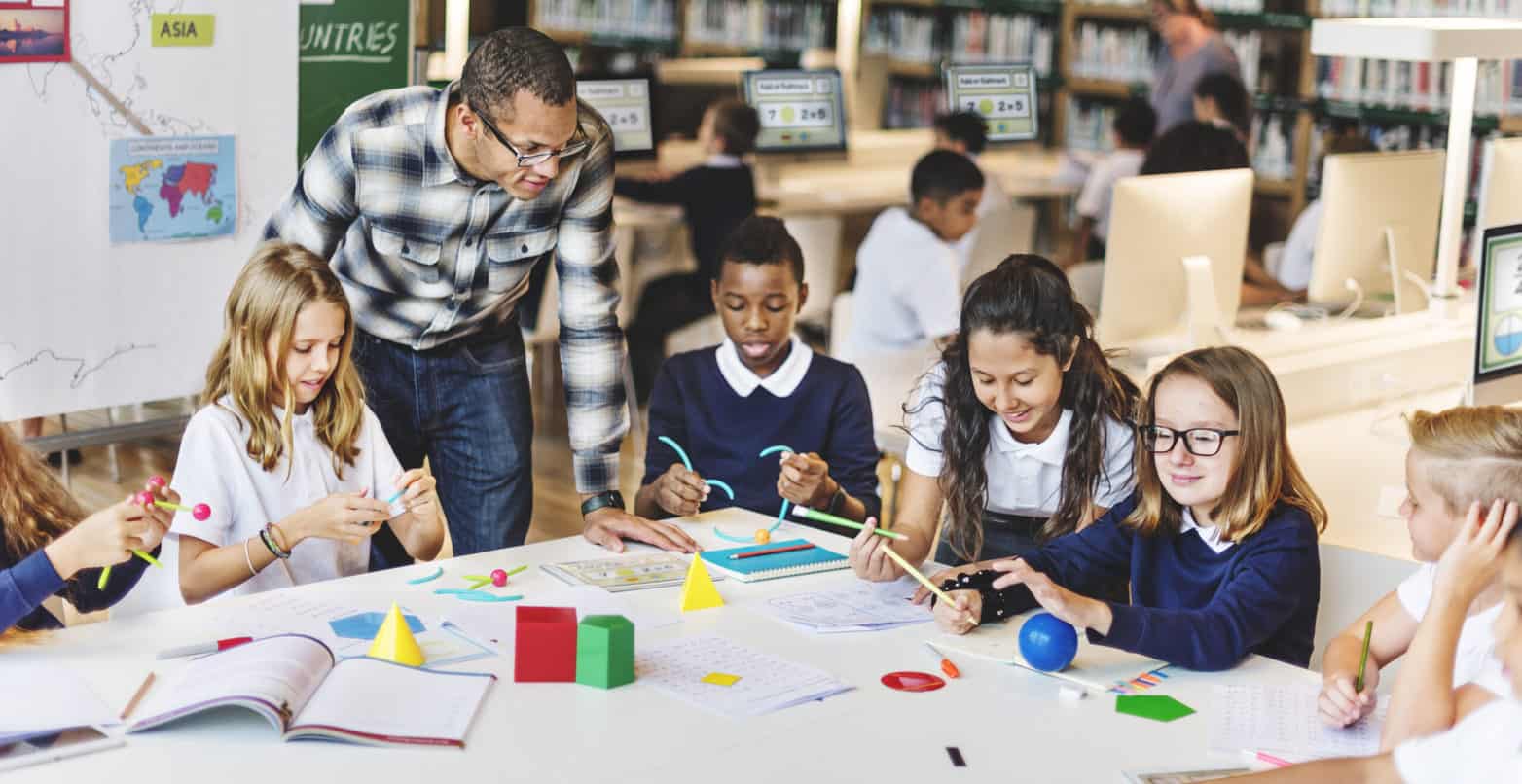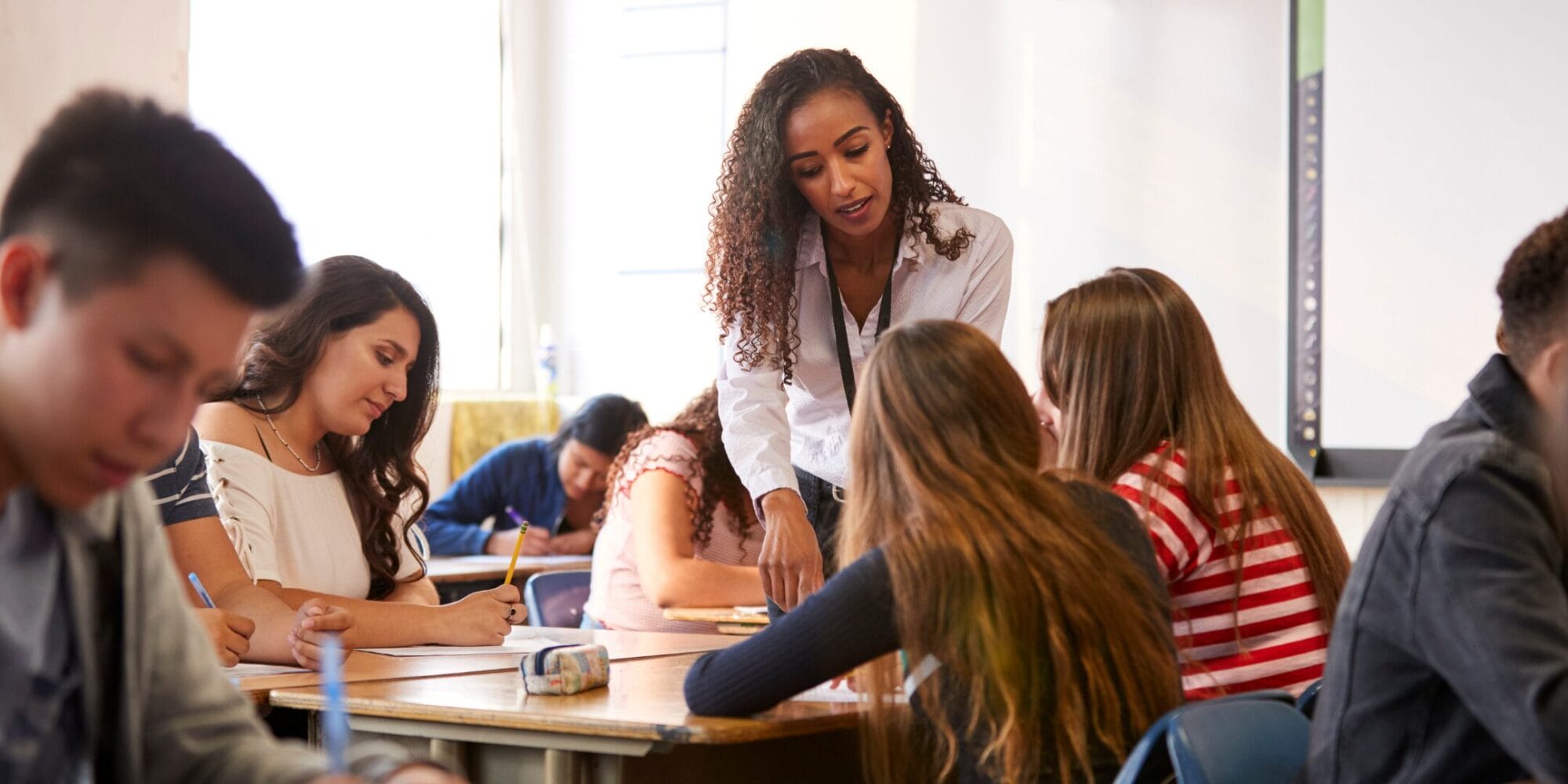Building relationships to enhance students’ learning experiences in the classroom.
Sharing a Common Goal
We’ve all got our favorites; there is no way around it. Maybe a lunch spot, a news outlet, color, or scented candle—we’re lying if we say we don’t play favorites.
As teachers who support multilingual learner (ML) students across grade levels and content, we’re going to have our favorite spots to spend our time working. Yet, we’ll know where our students need the most support, and we’ll need to hold our breath and dive deep into a subject that is not our favorite, or into interactions with another teacher with whom we’ve never seen eye-to-eye.
We can picture those classes where everything is clicking, groups are moving, and students are getting the support they need when they need it. But, how do we get to that point?
Some co-teaching partnerships have been the stuff of magic, where we helped each other and the students soared, while in others I felt like I was chained to a corpse. Although the expectation for our students has always been shared: growth!
What have been some ways that I’ve turned what was going to be a never-ending bad first date into a palatable working relationship?
Key Steps Towards Effective Collaboration
Effective collaboration for MLs starts with a plan. Teachers are always making plans, so this shouldn’t be too big a deal, and yet, when it comes to planning with another adult, there can be conflict. Let’s just smooth past that for now and get to having a plan to focus on!
Honigsfeld and Dove (2019) share a framework for effective collaboration that starts with co-planning. This effort needs ESCROW to maximize the effectiveness of collaboration.
Establish and stick to set meeting times.
Start by discussing big ideas and setting essential learning goals.
Concentrate on areas of special difficulties for MLs; scaffold learning, adapt content, modify assignments, and differentiate tasks.
Review previous lessons based on student performance data.
Overcome the need to always be in control.
Work toward a common understanding of MLs’ needs.
We can bring some tools to the table that will help our co-teachers want to partner with us and build more engaging lessons that bring up all the students in the room and not just our MLs. These include:
Being clear that you are a value-adding person in the room to help stave off the initial hesitancy that some co-teachers will give.
- Making sure that you are ready to bring a fresh look at the content being taught.
- Utilizing graphic organizers to help visualize the goals of the collaboration.
- Making up chants for vocabulary to be more memorable, and being ready to provide photo slide decks and realia for bringing academic vocabulary more to life.
- Communicating on a regular basis. The established meeting time is the anchor of this partnership. Sometimes I meet with my co-teacher just to check in, but we still have that time set because it is critical to have open communication.
Collaborating in the Real World
All of this sounds great, but unless you have a working relationship with the other adult in the room, it will all fall apart. I’ll speak from my own experience. I am the only ML teacher on campus, and I have a caseload of ML students scattered across the 5th-8th grades. In order to consistently work with all of my students, we created a schedule that has me pushing into ELA and science classrooms when I don’t have a small pull-out group. There are many different types of co-teaching models, and depending on the situation, they can all be beneficial, but definitely, none will be if not carefully planned and deliberately executed.
The two co-teaching models I’ve found most successful are Station Teaching—working with a group of students with similar needs in the classroom, and careful planning with my co-teacher— and Team Teaching, a more time- and relationship-dependent arrangement where the content teacher and I split the initial mini-lesson and are able to make laps around the room checking for understanding, giving feedback, addressing common misconceptions, and reteaching. Team teaching is great, but it requires the most mutual understanding of myself and the other teacher as well as having a great relationship with each other.
It’s All About Building Relationships
Starting the year out with a new co-teacher takes time and trust. I start out the year with an interest survey that my co-teachers fill out. It helps us adults connect with each other and work better from there. The interests are outside of our normal school day, for example, TV shows we like, foods, hobbies, animals, etc. These are things that we can focus on outside of our classroom, especially for how much time we’ll spend sitting and talking about that every week. Everybody has something in common with anyone—find it. Trust, it’s hilarious the things you’ll have in common with somebody that you’d never think you’d be hanging out with under any other circumstances! You’ll have a better classroom environment and student work because you both like intense baking competition shows.
Finally, having a systematic assessment of how you are doing as a group is also a great way to objectively sense if the classroom is benefiting from the partnership. Again, there are a lot of charts and surveys to be found, but a simple “Yes/No” survey makes a very quick self-assessment, and then comparing the results of both teachers can help find gaps and strengths with the team for the growth of students.
You may also want to read Serving Language Learners From an Asset-Based Lens to learn more about the definition of MLs and What My District Gained From Collaboration, which highlights the benefits of collaboration.
What Are Your Thoughts?
- What is your preferred model for collaboration to support MLs?
- What are your favorite tools to enhance collaboration with your colleagues?





